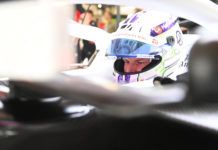In his column for Red Bull, dubbed ‘Christian’s Column: Strange Times’, Christian Horner spitballed some ideas related to customer cars, while also telling what it was like on the inside of the F1 Australian GP weekend.
With the COVID-19 pandemic pausing racing, the FIA, F1, and the teams have been discussing options that would ensure the survival of both the teams on the grid, and the sport as a whole with minimal losses all around.
The primary idea to have been discussed is a lowered cap. Evidently, this was ratified, and the current ceiling for the budget limit is $145 million – $30 million lower than the initial cap, and roughly $45 million higher than what some teams have proposed.
McLaren specifically have been advocates for a controversial $100 million cap, and while he agrees that something more should be done for small teams, Red Bull’s Christian Horner is of the belief that there’s a better way to go about doing this.
Offering up what was a somewhat unusual alternative, Horner suggested that F1 go the way of customer cars – something he has been vouching for some time now – where F1 teams can buy their competitors’ last-generation cars, and use them in races.
The solution not only serves small teams, who could buy whole cars and cut out the price of development, but it also serves larger teams, who would get some extra liquidity by selling off their cars at the end of the year.
On the other hand, there is the argument that being a constructor means you are responsible for building a car of your own. Both of these points were addressed by the Brit, who, it’s worth noting, has always been critical of the cost cap due to the fact that it is difficult to regulate.
“Money is a hot topic among F1 teams right now,” wrote Horner. “The problem is, so much is made about the figure of the cost cap that I believe it is missing the point. F1 teams will always spend whatever budget they have available to them. Plus an extra 10 percent.
“It is impossible to compare the spending of Ferrari to Haas, of Mercedes to Racing Point or even from Red Bull to AlphaTauri. They are all completely different structures and business models. I believe the solution should be looking at what drives those costs up in the first place and that is the R&D cost of building and developing cars in the hope of being competitive.
“I fully support the need to reduce costs and ensure that all 10 teams remain in the sport but there are many ways to accomplish that goal and they are not all just about lowering the cost cap. If the main target of a cost cap is about being competitive and helping the smaller teams, especially as we come through the current crisis, then I would be fully open to selling our cars at the final race of the season in Abu Dhabi.
“Some people say that customer cars are against F1’s DNA to design and build your own car, well times have changed and we need to find the best way to make the smaller teams competitive and survive the current crisis. This approach works well in MotoGP and it could even attract more teams to the grid, which we would all welcome.
“Teams spend fortunes over winter copying others, why not just give them the opportunity to buy last year’s car? It would make far more sense for a team to be competitive, rather than spending money developing something if the funds are not there to do so.
“As the business model of the smaller teams evolves and they become more competitive with customer cars, they can bring in increased revenue and then look to build their own cars again,” summed up Horner.
However, this wasn’t all that he had to share. Not only did he discuss his pride in F1 teams’ actions as part of Project Pitlane, and his support for the shutdown. He revealed how Red Bull and Renault personnel worked together in building ventilators and how the doctors were surprised by the quick work of the mechanics.
He also provided insight into what went on behind the scenes of the Australian GP weekend. Horner wrote extensively on that particular subject matter, detailing his initial reactions to the decision, what he proposed in the meetings that were held among F1’s top brass, and what the discovered-at-3AM ‘turning point’ was.
“If you wind the clock back to the Australian GP, there were about 13 people who showed symptoms of Coronavirus in the paddock, and they all went off to get tested,” wrote Horner. “All the results were coming back negative. It was people with jetlag, sore throats, colds and that kind of thing.
“But then one McLaren test came through positive and, before there was a group discussion about it, they took the decision to withdraw from the event. At the time, it all felt rather knee-jerk, certainly without knowing all the facts as this was one positive case from thousands of people working in the paddock.
“We called a meeting at the Crown Hotel and got F1’s Managing Director, Ross Brawn, involved. He came and brought the FIA’s Race Director, Michael Masi. As the authorities were still happy for the event to go ahead I suggested, as many of us did, that we should run on Friday as planned and re-assess the situation on a regular basis.
“If people showed symptoms then they would be tested, because they were turning them around pretty quickly, and if there were any further cases then we would make the decision on whether we should continue, but at least we would have started the event.
“It was McLaren’s decision to pull-out which they had every right to do given the circumstances but there is nothing in the rules that says if one team withdraws, the others have to do the same. Given the guidance at the time and the fact that other sporting events were taking place in Australia the same weekend, I pushed to run because there was only one positive test which resulted in a split vote among the teams.
“Ross called the FIA President, Jean Todt, who said he would go with the majority, so it was down to Ross as he had the final vote. He said he agreed with my suggestion, to do further tests and evaluate the situation in 24 hours, and he also wanted to get the event rolling.
“My feeling was that if the government and medical authorities felt it was safe for the race to go ahead, then as a race team we were prepared to race. But, soon after the meeting had ended, I had a telephone call from Ross at around 3AM, who said we had a bit of a problem because Mercedes had changed their position.
“It also meant they would not supply engines to their customers. It turned the situation on its head and the eventual outcome changed. As a result, there was little choice for F1 but to cancel the event,” summed up Horner.
Here’s Honda writing about hybrid tech sharing in new Jazz
Here’s Red Bull trio on Talking Bull podcast
Here’s the letter sent to F1 teams
The story was edited by Darshan Chokhani



















